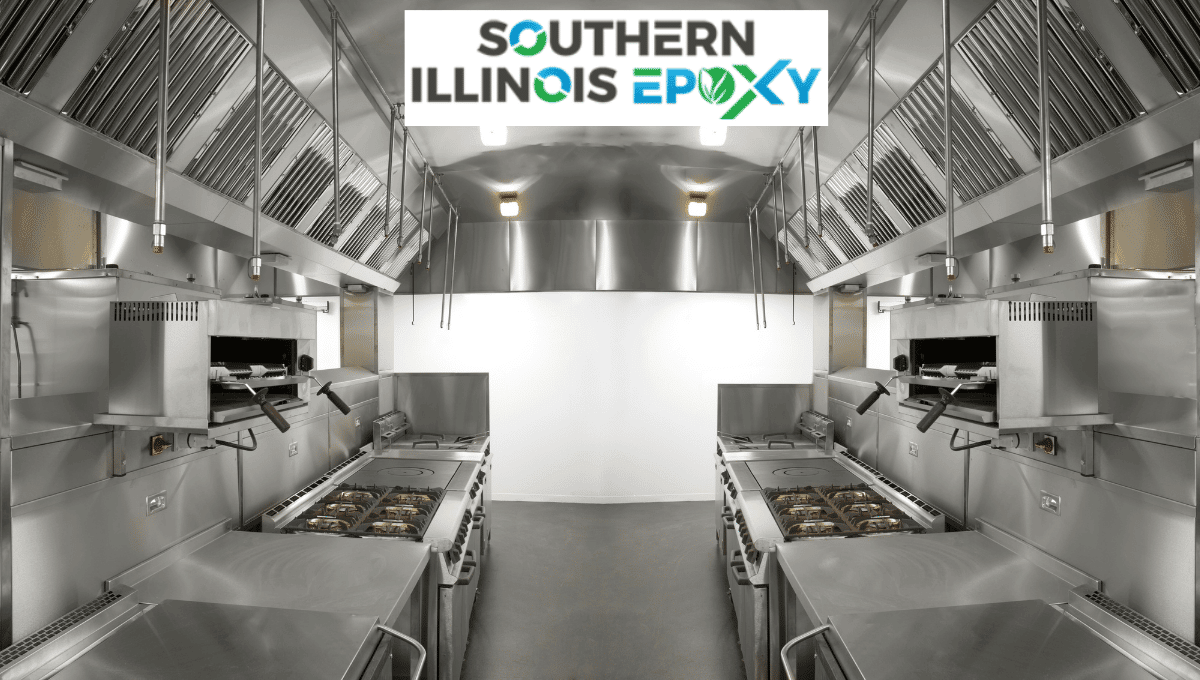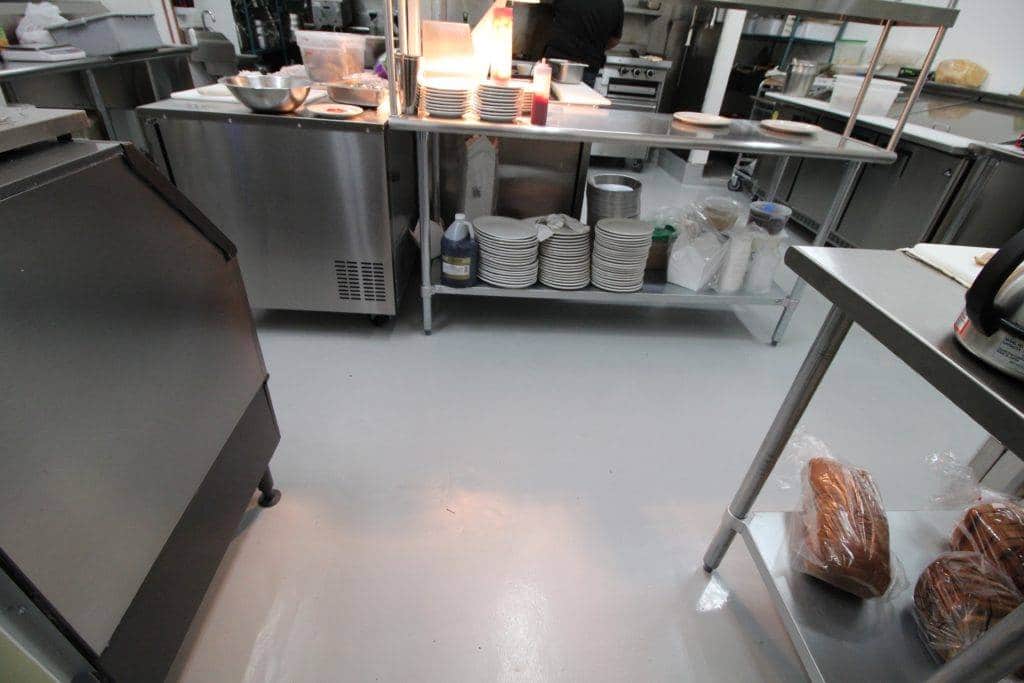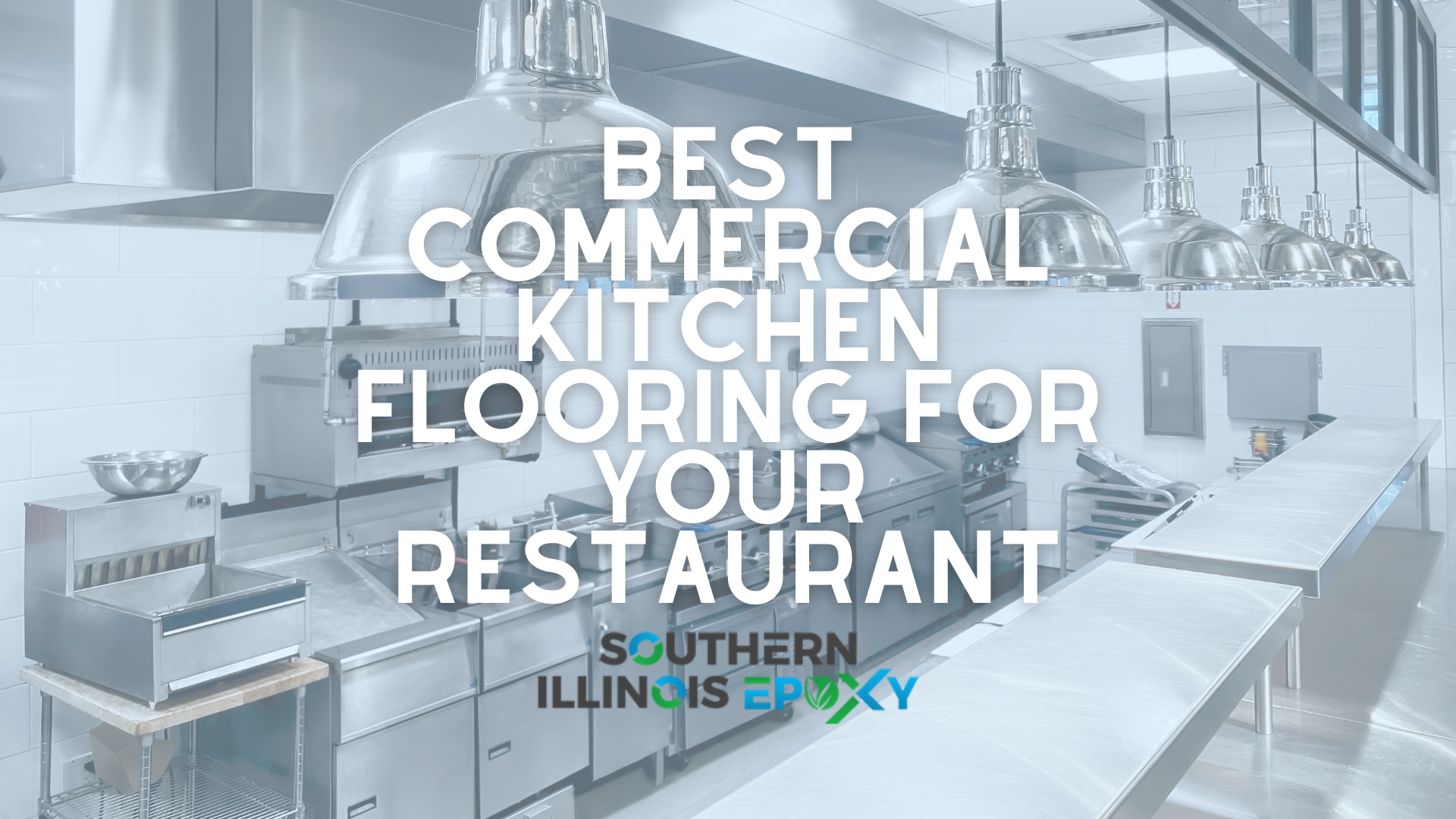Commercial kitchens floor trends are pretty fast-paced. Mishaps happen every day in the kitchen due to the frantic nature of preparing the best food. For example, slick flooring can lead to worker injuries, and heavy kitchen equipment can damage your floors’ lifespan.
Guidelines and best practices have been developed for commercial kitchens by OSHA and the US Department of Labor to protect the health and safety of workers. For large kitchen spaces, each state has its own rules for commercial kitchen laws. To meet OSHA and state requirements, we suggest consulting the product specifications provided by the manufacturer.
We have compiled a list of the best, most durable flooring solutions for your commercial kitchen. Even though each type of flooring has its perks and drawbacks, they’re all excellent choices. Regardless of the time of day, you can ensure that your employees are safe and that your workplace is immaculate.
What To Look For In A Commercial Kitchen Flooring
Restaurant kitchen flooring is subjected to the ultimate test. Your commercial kitchen floor sees it all, from continuous spills to oil stains to regular “wear and tear” from the busy kitchen staff. As a result, it’s even more critical to select the proper restaurant kitchen flooring solution that can withstand the rigors of a busy restaurant like yours.
The following is an overview of the five factors you should consider while choosing in commercial kitchen environment.
1. Easy installation
Time commitment is one of the most significant impediments to restaurant operators renovating their floors. It’s difficult to imagine closing your restaurant for three days, the associated revenue loss. But that is the usual time required by most flooring firms to install restaurant kitchen flooring. While this is not the most critical aspect in selecting your flooring installer, it should be a decisive factor. Overnight installation is perfect, as it can be completed during downtime without interfering with your business flow.
2. Hygienic
Keeping your kitchen floor neat is just as vital as its durability and lifespan. Antimicrobial and antibacterial qualities should be included on the surface to prevent microbial growth, and thereby make it stain resistant. Nonporous, seamless, and waterproof flooring is the best way to ensure hygienic conditions in your kitchen. A monolithic surface or impermeable floor covering with no seams where bacteria can infiltrate is the best option.
3. Slip Resistance
The types of components that come into contact with the floor and the preferences of management all influence how restaurants maintain their floors. Moisture and pathogen growth in the kitchens can make the kitchen floor slippery. Slip-resistant restaurant floors not only make it a comfortable environment but also provide excellent traction for both employees and guests. Specialized chemicals and aggregate are used to make floors slip-resistant. The rough edges of aggregate prevent slippage by allowing traction. Aggregates used in concrete include quartz, glass, and plastics. Other common materials include walnut shells, aluminum oxide, epoxy, and quartz sand. Choosing the right flooring for the restaurant is easier when you work with a knowledgeable flooring contractor.
4. Durability
If you’ve ever worked in a restaurant, you’ve experienced the “hustle and bustle.” There are also things like salt, oil, and other damaging materials on your floors. You must choose the flooring that can withstand the daily wear and tear experiences. Durability is a key part of this. The following features of durability are vital to look for in restaurant kitchen flooring solutions so that your floors can resist the hard conditions of your restaurant for a long time:
- Chemical Resistance
- Temperature and Thermal Shock Resistance
- Moisture Tolerance
- Impact and Abrasion Resistance
When selecting the best flooring systems, be sure that the materials are highly durable.
5. Easy Maintenance
You probably don’t want to keep reinvesting money to maintain your new flooring every year after you’ve installed it. That’s why it’s critical to choose a commercial kitchen floor that requires little to no upkeep and allows you to concentrate on running your business rather than worrying about the floor. A watertight and non-porous surface could be the best for you in this case.

Flooring Options Available For Commercial Kitchens
Kitchen floors face many challenges. That is why you must choose a robust material, slip-resistant, and with little water damage.
The followings are the most common types of flooring available for commercial kitchen floors.
1. Ceramic Tile flooring
Natural clay is used to make ceramic tile flooring, which is then molded, glazed, and fired at a high temperature. Due to its impermeability to water and stains, this material is great for commercial kitchens. Ceramic tile flooring can withstand high temperatures and damage as well. Ceramic tile may last for a very long time with minimal change in look or performance under normal circumstances.
There are a wide variety of colors and patterns to choose from when it comes to ceramic tiles. A wide variety of tile shapes and sizes are available, allowing you to create a wide variety of different styles. It’s perfectly fine to look for its porcelain tile cousin if you can’t find the color or design you want in ceramic tile. Porcelain tile is also suitable for kitchen flooring, though it can be a bit more brittle.
Ceramic tile has only a few drawbacks. The ground can be icy and hard to walk on. It is possible to rectify this by putting a radiant heating system under the tiles.
Collaborate with your installer to keep spare tile on hand and prepare for replacements and maintenance – the majority of products include some replacement and maintenance guidelines.
2. Commercial Vinyl flooring
Vinyl flooring is one of the easiest and most durable flooring options. Water and stains do not affect this man-made material. The floor can be kept spotless with a fast sweep, mop, or vacuum.
Vinyl floors are one of the most cost-effective, easy to clean, and of relatively high maintenance. The installation process is also easy. High-traffic kitchens with a lot of family use are a good fit for this type of floor. If you use it frequently, anticipate replacing it every ten years or so, as it wears and fades quickly.
New vinyl flooring is available in both tiles and planks. Wood and stone can be convincingly imitated with this durable, high-quality material, which can endure up to two decades.
3. Natural Stone tiles
Choosing natural stone tile for your kitchen floor is a fashionable and long-lasting option. Stones like granite, limestone, travertine, and marble all have their unique color and veining features. Natural stone tile has a distinct look and feels that can’t be duplicated by man-made alternatives.
Natural stone, despite being hygienic and easy to maintain, requires more upkeep than ceramic or porcelain. Sealing is important to prevent stains because different types of stones are permeable. Pre-sealed tiles and natural stone need to be re-sealed at regular intervals over the years.
Sealing at the time of installation is a must. For usage in a kitchen, stone tile must be carefully selected. It should be relatively smooth and flat, with no deep surface variations that could pose a trip hazard.
Avoid polished surface tiles while working with natural stones since they become slippery when wet. Honed or brushed surfaces provide good traction, whereas denser stones such as slate and granite resist staining and are easier to clean.
4. Concrete
If you don’t have a basement and your kitchen is on the ground floor, you may want to consider concrete as a flooring choice. For the price, it’s an excellent choice. It’s possible that you already have a concrete slab beneath your current kitchen floor. Several types of subfloors can be used to create a new concrete slab if one doesn’t already exist.
Once polished or stained, a concrete floor can be transformed into an eye-catching, low-maintenance piece of art. Modern kitchens can benefit from concrete floors.
Concrete flooring has a few problems. Like ceramic tile, the material can be cold and rough to the touch. When trying to sell your property, you may be put off by the urban or industrial feel that concrete flooring might give off. You can make use of rubber mats to soften harden concrete floors.
5. Epoxy flooring
Epoxy resins, colorants, and additives for texture and slip-resistance are used to make epoxy flooring. One prevalent additive is marble chips. Epoxy flooring is seamless and extremely hygienic because it is applied as a liquid and hardens as soon as it dries. Refinishing old kitchen flooring with this method creates a completely new, sealed surface. Coved bases, seamless transitions, and water-shedding corners can all be achieved with the application of epoxy in the kitchen.

Challenges Faced By Flooring Systems
Installation is a time-consuming operation that requires a great deal of attention to detail and numerous steps. Occasionally, flooring will fail to owe to an unforeseen issue, but most of the time, it is due to human error, either by overlooking a stage in the installation instructions (such as forgetting to prepare the subfloor, slip-resistant) or by making simple application errors.
When standards, or a lack thereof, collide with product specification and performance, issues develop. When excessive expectations and misspecification trump material performance capability and the effort to save the planet’s resources, a dilemma might develop.
Final Verdict
Naturally, each restaurant kitchen has a unique set of requirements and “nice-to-haves,” and no single solution is ideal for everyone. The best method is to view and feel the various alternatives in person and to discuss your preferences and concerns with a flooring professional before you install. Ideally, the choice you pick will produce a positive return on investment for years to come – which is why it pays to take your time.




